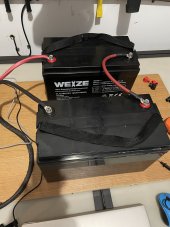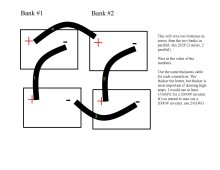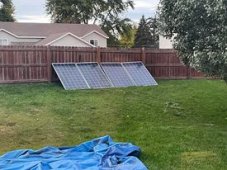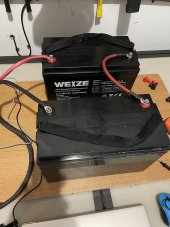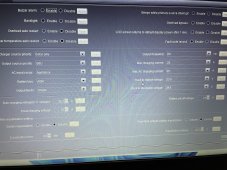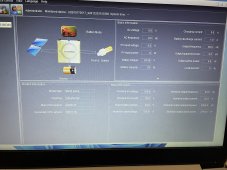I currently have two 12v 100ah batteries for my inverter (24v) requirements.
Are you saying I can add more 12v batteries without exceeding the 24v requirement but expanding my ah?
Yes you can do that. You just need to wire them up properly.
Your current two 12v batteries are wired in
series, which doubles their voltage to 24v.
So get yourself another two 12v 100Ah batteries and wire those the same way, to each other. Don't wire them up to the original two yet.
Then you will wire the two banks to each other, in
parallel. To do that, you will take two more of the same thickness of jumper cables you are using on your two banks and wire them like this:
Wire the Positive+ terminal of Bank 1 to the Positive+ terminal of Bank 2. Then do the name for the Negative- terminals.
Now the the two 24v banks are sharing their capacity (Ah) with each other. The whole she-bang is now a single 24v 200Ah bank.
You could do it again and end up with a 24V 300Ah battery bank.
With a large AGM bank, the problem will start to become that you don't have enough solar panels to produce enough power to fully charge the battery bank every day. AGM really NEEDS a complete and full charge at least once a week. If you regular discharge down to 50% and only get charged back up to 80% everyday, the AGM batteries don't like that. Lithium, no problem.
Also, if you haven't discovered yet, the other main limitation with lead acid batteries (especially AGM) is you cannot discharge them more than 50% on a regular basis, otherwise you risk causing permanent damage to their capacity (it will reduce). So your current 100Ah bank only had 50Ah that is usable and if you expand to 200Ah, only 100Ah is usable. Sucks, eh? That's a big reason why (besides easier charging) many people switch to lithium. Lithium batteries can safely use 80% of their capacity every day and even 90% occasionally. Even if you discharge a lithium battery 90% every day, you will usually still get more lifetime out of the battery than with AGM at 50%.
You will eventually want a shunt monitor, which attaches directly to the battery and gives you a truly accurate view of the state of your batteries capacity. They are as cheap at $16 and as expensive as $250+. I personally like the user interface and price of the Renogy one, which is currently on sale for $80. For AGM, such a monitor is fairly essential and it's still very useful for lithium. You can even set it to sound an alarm when your AGM bank has reached 50% so you can either turn off the load or plug your grid AC charger into to charge up the batteries if there's no sun.




